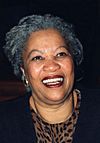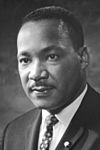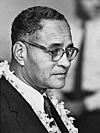British Rail Class 13 facts for kids
Quick facts for kids British Rail Class 13 |
|
| Power type | Diesel-electric |
|---|---|
| Builder | British Railways’ Darlington Works (builder and rebuilder) |
| Build date | 1965 (rebuilt) |
| Total production | 3 |
| Configuration | 0-6-0+0-6-0 |
| UIC classification | C+C |
| Gauge | 4 ft 8 1⁄2 in (1,435 mm) |
| Wheel diameter | 4 ft 6 in (1.372 m) |
| Wheelbase | 42 ft 1+1⁄2 in (12.84 m) |
| Length | 60 ft 1 in (18.31 m) |
| Width | 8 ft 6 in (2.59 m) |
| Height | 12 ft 8+1⁄2 in (3.87 m) |
| Locomotive weight | 120 long tons (122 t) |
| Fuel capacity | 1,336 imp gal (6,070 L; 1,604 US gal) |
| Prime mover | English Electric 6KT, 2 off |
| Traction motors | EE, four off |
| Transmission | DC generators, DC traction motors, double reduction gearing |
| Multiple working | Not fitted (except control of slave by master) |
| Top speed | 20 mph (32 km/h) |
| Power output | Engine: 350 hp (261 kW) × 2 |
| Tractive effort | Maximum: 70,000 lbf (311.4 kN) |
| Train heating | None |
| Locomotive brakeforce | 37 long tons-force (370 kN) |
| Train brakes | Vacuum |
| Career | British Railways |
| Number | D4500–D4502, later 13001–13003 |
| Axle load class | RA 8 |
| Retired | 1983–1986 |
The British Rail Class 13 was formed in 1965. The Tinsley Marshalling Yard needed more powerful shunters to move vehicles around. This was provided by permanently coupling together two Class 08 shunters as a ‘master and slave’ (or ‘cow and calf’) unit. The second of the two units had its cab taken off. Both units were ballasted to improve traction. At first the units were coupled cab-to-cab but it was easier to couple Master nose to Slave cab. The thinking behind adopting this dual locomotive design is that a larger, rigid locomotive could not be used due to the risk of grounding on the hump.
Images for kids
Black History Month on Kiddle
African-American Noble Laureates:
 | Toni Morrison |
 | Barack Obama |
 | Martin Luther King Jr. |
 | Ralph Bunche |

All content from Kiddle encyclopedia articles (including the article images and facts) can be freely used under Attribution-ShareAlike license, unless stated otherwise. Cite this article:
British Rail Class 13 Facts for Kids. Kiddle Encyclopedia.

